The Fablab (i.e., fabrication laboratory) movement was born in the beginning of the 21st century and quickly spread around the world. These workshops are designed to show people how digital technology can be used to fabricate “almost anything from almost nothing” to improve the quality of life. For this, the Fablab can use almost any material, from plywood and matboard to metal and plastic, and various technologies.
The first Fablab in Russia was established at the National University of Science and Technology MISIS (NUST MISIS). It now offers a master’s program in digital manufacturing. This image gallery, by NUST MISIS, offers a glimpse of some of the laboratory’s projects that could become part of the home of the future.

1/11
© Photo : National University of Science and Technology MISIS (NUST MISIS)
The carcass of the home of the future could be made from plywood structures before they are replaced by sturdier materials. The plasticity of wood makes it possible to make buildings in almost any shape.
Above: Part of a plywood structure for building a complex stone arch.
Above: Part of a plywood structure for building a complex stone arch.

2/11
© Photo : National University of Science and Technology MISIS (NUST MISIS)
It is easy to 3-D print interior designs. Designers have integrated 3D printing in interior design, for example, of desk lamps, night lights, wall-mounted lighting fixtures, torch lamps and chandeliers.

3/11
© Sputnik / National University of Science and Technology MISIS (NUST MISIS)
The interplay of light, texture and shape in these 3-D printed lighting fixtures makes the home feel cozy.
Above: A whale-shaped lamp by NUST MISIS student Mikhail Shumikhin.
Above: A whale-shaped lamp by NUST MISIS student Mikhail Shumikhin.
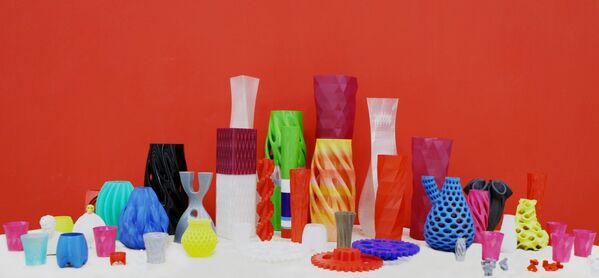
4/11
© National University of Science and Technology MISIS (NUST MISIS)
The possibilities of 3-D printing are almost endless when it comes to designing interior items of various shapes, textures, volume and sizes.
Above: 3-D printed vases.
Above: 3-D printed vases.

5/11
© Photo : National University of Science and Technology MISIS (NUST MISIS)
Digital technology can be used to make almost any kind of furniture. Self-designed and custom-made furniture tends to be more comfortable, functional, sturdy and cheaper than mass produced products. Designs can be replicated in any properly equipped center and used in any building.

6/11
© Photo : National University of Science and Technology MISIS (NUST MISIS)
Even toys will be smart in the home of the future. A magnet construction set is designed for children of 5 and older. Colored plastic parts either repel or attract each other, which makes it an educational tool on top of being an entertaining toy. Construction sets of this kind can be 3-D printed in an unlimited number of varieties.
Above: a construction set for children by Yaroslava Barmenkova, designer and head engineer at NUST MISIS ARTCAD Learning and Production Center.
Above: a construction set for children by Yaroslava Barmenkova, designer and head engineer at NUST MISIS ARTCAD Learning and Production Center.
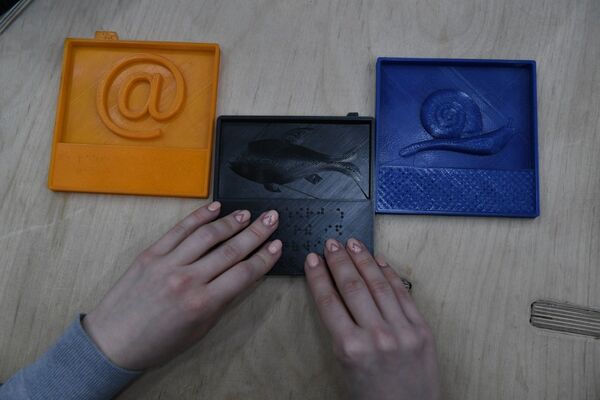
7/11
© Photo : National University of Science and Technology MISIS (NUST MISIS)
Children are not the only ones who can use digital technology to better understand the world. The Riddle Book project consists of a set of plastic tablets with 3-D images of various things and riddles presented in the Braille alphabet. These tablets can be used to seek all kinds of things with your hands.
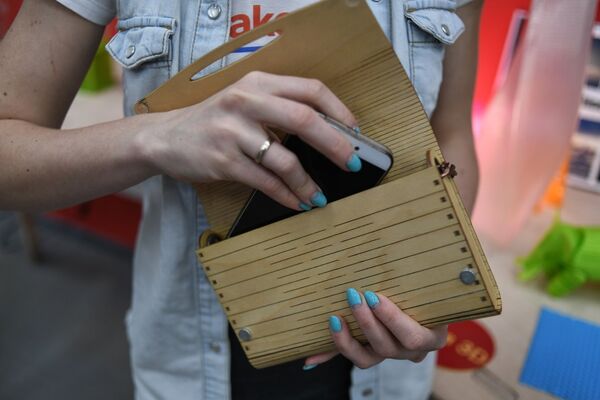
8/11
© Photo : National University of Science and Technology MISIS (NUST MISIS)
Wood can now be used not only as a construction material, but also for clothes and accessories. All you need is a computer, a cutter and some metal to make a production-ready designer clutch.

9/11
© Photo : National University of Science and Technology MISIS (NUST MISIS)
Digital manufacturing changes the way people see their hobbies, including sports. Since the mid-20th century surfboards have mostly been made from polyurethane foam covered with several layers of polyester resin. Fablab’s solution to make the surfboard body from cardboard could bring about a new generation of surfboards.
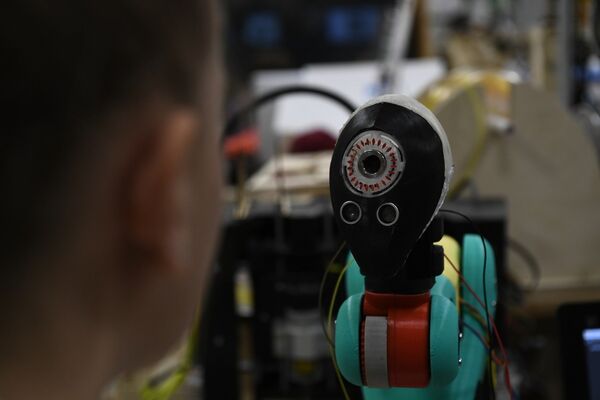
10/11
© Photo : National University of Science and Technology MISIS (NUST MISIS)
An IRIS robot will guard the home, acting relentlessly, albeit fairly. By speaking to the device, you can either be granted access or prevented from entering a building or using appliances. These robots could find a place in smart homes.
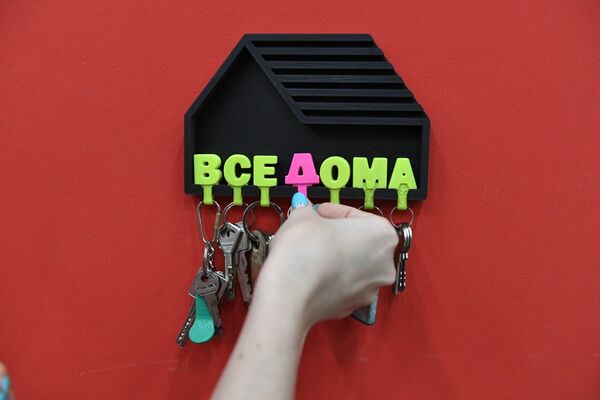
11/11
© Photo : National University of Science and Technology MISIS (NUST MISIS)
Seven keychains on a single holder with the inscription “Everyone Home.” Why are there seven letters? Maybe because in Russian the word family is made of the words “seven” and “myself.”
Above: The Everyone Home project by Yaroslava Barmenkova, designer and head engineer at NUST MISIS ARTCAD Learning and Production Center.
Above: The Everyone Home project by Yaroslava Barmenkova, designer and head engineer at NUST MISIS ARTCAD Learning and Production Center.



